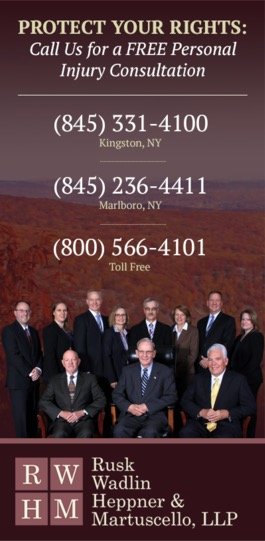Sidewalks from Coast to Coast

What’s Your Duty to Repair or Maintain?
Is your beautiful sidewalk buckling as tree roots push their way up from underneath? Are there loose or missing bricks, or is there a sinkhole obscured by standing water? Or is it simply covered with snow and ice after a winter storm? If someone slips or trips and falls on the sidewalk, they can suffer painful injuries, from sprained wrists and twisted ankles to serious head or back injuries or broken bones. If the sidewalk in front of your house is in disrepair or a hazardous condition, what responsibility do you have to make it safe, and will you be the one who gets sued when someone gets hurt? It’s a complicated question, and the answer for the most part depends on the city and state where you live.
Generally speaking, property owners are responsible to fix or warn of any unreasonably dangerous condition on their premises. Earlier this year, we talked about premises liability generally, and how the status of the injury victim may impact your liability toward him or her. In the case of sidewalks, other aspects of premises liability law which may come into play include notice requirements and statutes of limitations, the “storm in progress” doctrine, and whether the responsible entity had received prior complaints about the hazard. Most importantly, though, is how state or local law allocates responsibility for maintaining or repairing the sidewalk. Here’s a few examples:
New York, New York
The first thing to understand is that homeowner liability for sidewalks is different in New York City than elsewhere throughout the Empire State, and it may differ from community to community as well. In the Big Apple, the NYC Administrative Code section 7-210 holds property owners responsible for maintaining the sidewalk which abuts their property, except that the City retains liability for property which abuts single-family homes as well as duplexes and triplexes so long as they are at least in part owner-occupied and used exclusively for residential purposes. In other words, homeowners are basically relieved of liability to maintain the sidewalk.
If you are renting out your property and not occupying it all, however, the duty falls back on you to maintain the sidewalk in a reasonably safe condition, which includes removing accumulated snow and ice within a reasonable amount of time after snow stops falling. A “reasonable time” differs depending upon the time of day the snowfall ends. New York personal injury attorney Leandros A. Vrionedes knows all about holding property owners, usually commercial businesses, liable to injury victims. “It’s critical to find out as soon as possible who the responsible party is,” says Mr. Vrionedes. “For instance, if you need to make a claim against the City or an agency like the Transit Authority, you need to provide notice very soon after the accident. The timelines to file a claim or lawsuit are very different for public entities versus private landowners or businesses.”
In most NY communities outside the City, property owners are liable for the portion of the sidewalk which abuts their property and must repair or warn of a known dangerous condition that has existed for an unreasonable length of time. An injured pedestrian would have to prove that the property owner either created the condition or had actual or constructive knowledge of the danger. According to injury lawyer Vrionedes, constructive knowledge means the owner should have known the hazard was there. For property that the city would otherwise be liable for, many New York villages and towns have prior written notice statutes in place which relieve the municipality of liability unless it had received a written complaint about the condition. In other words, constructive notice does not work against cities that have these statutes, unless it can be proven the city created the defect through affirmative negligence or that some special use of the property conferred a special benefit on the municipality.
New Jersey
Landowners in the Garden State are required to clear the sidewalk after a storm only in certain cities. In many localities throughout the state, homeowners bear no responsibility for the sidewalks in front of their residences to ensure they are safe from precipitation or tripping hazards. An exception to this “no-duty rule” for residential property exists if the homeowner personally created or exacerbated the dangerous condition. For instance, a homeowner who knows about water flowing out of his sump pump down to the sidewalk where it freezes over could be liable to de-ice that patch of sidewalk until the problem can be corrected.
Los Angeles
LA homeowners don’t worry much about having to shovel walks, but they do have the constant headache of tree growth pushing up sections of sidewalk and creating significant tripping hazards. Under Los Angeles Municipal Code section 62.104, the City can require them to repair the sidewalk fronting their property if it is in such bad shape that it presents a danger to passers-by. The City can even direct the property owner regarding how the repair is to be accomplished and what materials to use. If the property owner fails to make the repair, the City can take over and bill the owner for the expense. The City tends to fix sidewalks damaged by street-side trees, although it can force property owners to share the cost if they were somehow negligent or responsible for the damage. The City may also waive permit fees and rebate homeowners for fixing sidewalks themselves rather than waiting for the City to get around to it.



